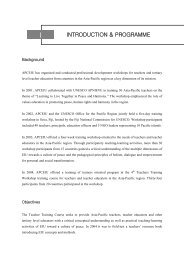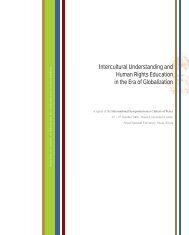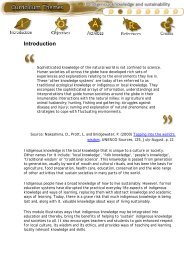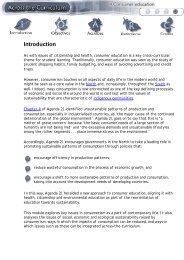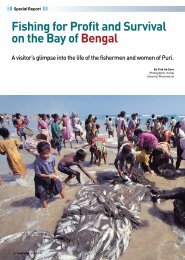REPORT OF UNESCO EXPERT MEETING ON - APCEIU
REPORT OF UNESCO EXPERT MEETING ON - APCEIU
REPORT OF UNESCO EXPERT MEETING ON - APCEIU
You also want an ePaper? Increase the reach of your titles
YUMPU automatically turns print PDFs into web optimized ePapers that Google loves.
intellectual and political community. Multiple indicators were developed to account for progress tha<br />
accounts more fully for social cohesion, health, education, stability and state of the environment. UNDP<br />
human development index is one such measure. More than thirty years ago, Butan announced their<br />
commitment to measure Gross National Happiness rather than Gross National Product.<br />
What should be learned:<br />
‣ Understanding of difference between needs and wants and appreciation of complexity of the topic<br />
‣ Understanding what affects a desire for a particular life-style, e.g. peer-pressure, advertising and<br />
media, etc, and differentiation between quality of life and a life-style<br />
‣ Ability to differences the quality of life and volume of consumptions<br />
Areas of consumption<br />
Individuals consume goods and services in several main “areas” – food, shelter, transportation, and<br />
clothing. Discussion of impacts in different areas of consumption will benefit, among other things, from<br />
a) relating it to the type of environment in which consumption takes place (urban/rural and type of<br />
ecosystem); discussion of different consumption alternatives (green electricity or nuclear energy, car or<br />
bus, buying of leasing, etc.), c) social aspects of consumption (job generation, social stability, etc.)<br />
Traditionally, there are several areas which governmental organsation, including schools and<br />
universities, consider in the area of sustainable purchasing:<br />
‣ Sustainable buildings<br />
‣ Vehicles and travel<br />
‣ Office consumables and equipment<br />
‣ Recycling/ waste minimisation<br />
Information and guidelines available in these areas might constitute a good source of information.<br />
Volume of consumption<br />
Additional challenges came from the analysis of the motivation for purchasing (UNEP&<strong>UNESCO</strong><br />
2000). Among four product criteria – eco-friendliness, quality, price and fashion, eco-friendliness was<br />
the last with only 40% of respondents claiming it to be a base of their purchasing decisions. Many<br />
young people are, predictably, motivated by peer-pressure in their purchasing and think (44%) that<br />
having more would make them happier.<br />
62



